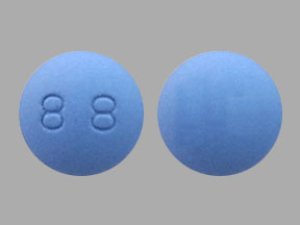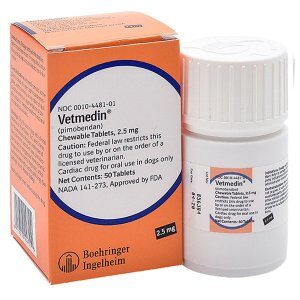Delivery Method: VIA UPS Reference #: 320-25-74 Product: Drugs Recipient:
Recipient Name
Mr. Luis E. Echeverria
Recipient Title
President
Evi Labs LLC
9110 NW 106th Street
Medley, FL 33178
United States
Issuing Office: Center for Drug Evaluation and Research (CDER)
United States
Warning Letter 320-25-74
May 14, 2025
Dear Mr. Echeverria:
The United States Food and Drug Administration (FDA) inspected your drug manufacturing facility, Evi Labs LLC, FEI 3014581785, at 9110 NW 106th Street, Medley, Florida, from January 9 to 15, 2025.
This warning letter summarizes significant violations of Current Good Manufacturing Practice (CGMP) regulations for finished pharmaceuticals. See Title 21 Code of Federal Regulations (CFR), parts 210 and 211 (21 CFR parts 210 and 211).
Because your methods, facilities, or controls for manufacturing, processing, packing, or holding do not conform to CGMP, your drug products are adulterated within the meaning of section 501(a)(2)(B) of the Federal Food, Drug, and Cosmetic Act (FD&C Act), 21 U.S.C. 351(a)(2)(B).
We reviewed your January 30, 2025 response to our Form FDA 483 in detail. Your response is inadequate because you failed to provide supportive documentation for evaluation or adequate evidence of corrective actions taken to bring your operations into compliance with CGMP.
During our inspection, our investigators observed specific violations including, but not limited to, the following.
1. Your firm failed to have, for each batch of drug product, appropriate laboratory determination of satisfactory conformance to final specifications for the drug product, including the identity and strength of each active ingredient, prior to release (21 CFR 211.165(a)).
You manufacture over-the-counter (OTC) drug products, including topical drug products containing the active ingredient aluminum chlorohydrate. You released batches of drug products for distribution without conducting adequate strength and identity testing.
In your response, you provide test results from retained samples of Zermat brand antiperspirant deodorants. However, your response is inadequate because some results did not meet your established specifications. For example, test results for lot 291023 of Zermat Kiwi Perfumado, topical roll-on antiperspirant, showed a concentration of aluminum chlorohydrate that far exceeded the product labeled amount. Furthermore, under the OTC antiperspirant monograph (M019), aluminum chlorohydrate is permitted in concentrations up to 25%. However, the potency for lot 291023 was found to be above 25% for aluminum chlorohydrate. A topical roll-on antiperspirant drug product with a concentration above 25% for aluminum chlorohydrate is not permitted under M019. You did not include an investigation into these failing results nor provide an action plan to address violative drug product in interstate commerce within expiry.
Testing is essential to ensure that the drug products you manufacture conform to all pre-determined quality attributes appropriate for their intended use and to ensure active ingredients meet specifications based on label claim. Because you lacked adequate testing of each batch of your drug products, you do not know whether they conform to all appropriate finished product specifications and are suitable for release to consumers.
In response to this letter, provide:
- A list of chemical specifications, including test methods, used to analyze each lot of your drug products before a lot disposition decision.
- An action plan and timelines for conducting full chemical testing of retain samples to determine the quality of all batches of drug product distributed to the United States that are within expiry as of the date of this letter.
- A summary of all results obtained from testing retain samples from each batch. If such testing reveals substandard quality drug products, take rapid corrective actions, such as notifying customers and product recalls.
- A comprehensive independent assessment of your laboratory practices, procedures, methods, equipment, documentation, and analyst competencies. Based on this review, provide a detailed plan to remediate and evaluate the effectiveness of your laboratory system.
2. Your firm failed to establish laboratory controls that include scientifically sound and appropriate specifications, standards, sampling plans, and test procedures designed to assure that components, drug product containers, closures, in-process materials, labeling, and drug products conform to appropriate standards of identity, strength, quality, and purity (21 CFR 211.160(b)).
Your firm failed to establish adequate microbiological specifications for your OTC drug products including (b)(4) oral suspension and topical antiperspirant deodorants. For example, your microbiological specifications were set at (b)(4) times greater than the United States Pharmacopoeia (USP) guidance for each of the dosage forms. This resulted in your approval and release of antiperspirant drug products which had exceeded the microbiological quality for your products intended use.
In your response, you state that you have implemented microbiological limits specifications that align with USP guidance and commit to obtaining speciation for any further recovered micro-organisms. However, you have not committed to perform retrospective testing and assessing impact on previously distributed product that may not have met your newly established specifications.
Adequate microbial specifications and testing methods to detect objectionable microorganisms in the presence of each drug product must be established to ensure that they are suitable for use by consumers.
In response to this letter, provide:
- A list of microbial specifications, including test methods, used to analyze each lot of your drug products before a lot disposition decision.
- An action plan and timelines for conducting microbiological testing of retain samples to determine the quality of all batches of drug product distributed to the United States that are within expiry as of the date of this letter.
- A summary of all results obtained from testing retain samples from each batch. If such testing reveals substandard quality drug products, take rapid corrective actions, such as notifying customers and product recalls.
- Clarification on whether you intend to continue production for each of your OTC drug products.
3. Your firm failed to establish adequate written procedures for production and process control designed to assure that the drug products you manufacture have the identity, strength, quality, and purity they purport or are represented to possess, and your firm’s quality control unit did not review and approve those procedures, including any changes (21 CFR 211.100(a)).
Inadequate Water System
Your firm uses water as a component to manufacture your OTC drug products, including aqueous drugs labeled for use in (b)(4). You failed to adequately validate your water production process to ensure it was consistently producing water of appropriate quality for its intended use, including the manufacture of oral and topical drug products. Additionally, your (b)(4) water system was not adequately designed or maintained, which could foster the development of biofilms. For example, your water system included a dead leg, was not continuously circulating, and was not subjected to validated sanitization processes. Furthermore, you failed to demonstrate that your water system was adequately monitored to ensure it consistently produced water that met appropriate chemical and microbial attributes.
In your response, you commit to hiring a consultant to re-design your water system. However, your response is inadequate because you have not committed to perform routine monitoring and to perform a retrospective impact assessment for products manufactured with water which failed to meet compendial standards and appropriate microbial quality.
(b)(4) water must be suitable for its intended use and routinely tested to ensure ongoing conformance with appropriate chemical and microbiological attributes. Routine monitoring of microbial counts and identity of contamination in the system is integral to ensuring oversight of the ongoing state of control and suitability of water for use in pharmaceutical manufacturing operations.
Inadequate Process Validation
You have not validated the processes used to manufacture your OTC drug products.
Furthermore, you failed to ensure adequate documentation and control over critical processing steps subject to variation (e.g., blend times, speeds, and temperatures) and proper qualification of equipment including scales used for your weight-based manufacturing processes.
In your response, you commit to writing validation procedures and providing critical process parameters. However, your response is inadequate because there is no assurance of completed process validation for each product, and you did not include critical attributes of a blended process dependent on variations in temperature. You also commit to calibrating your scales; however, you failed to provide supporting documentation. In addition, you did not consider a retrospective assessment of potential impact to your product distributed to the United States within expiry.
Process validation evaluates the soundness of design and state of control of a process throughout its lifecycle. Each significant stage of a manufacturing process must be designed appropriately and assure the quality of raw material inputs, in-process materials, and finished drugs.
Process qualification studies include intensive monitoring and testing throughout each significant process stage to characterize intra-batch variation and evaluates batches to determine whether an initial state of control has been established.
Successful process qualification studies are necessary before commercial distribution. Thereafter, ongoing vigilant oversight of process performance and product quality is necessary to ensure you maintain a stable manufacturing operation throughout the product lifecycle. See FDA’s guidance for industry, Process Validation: General Principles and Practices, for general principles and approaches that the FDA considers appropriate elements of process validation at https://www.fda.gov/media/71021/download.
In response to this letter, provide:
- A comprehensive, independent assessment of your water system design, control, and maintenance.
- A thorough remediation plan to install and operate a suitable water system. Include a robust ongoing control, maintenance, and monitoring program to ensure the remediated system design consistently produces water adhering to (b)(4) Water, (b)(4) monograph specifications and appropriate microbial limits.
- A detailed risk assessment addressing the potential effects of the observed water system failures on the quality of all drug product lots currently in U.S. distribution or within expiry. Specify actions that you will take in response to the risk assessment, such as customer notifications and product recalls.
- A detailed summary of your validation program for ensuring a state of control throughout the product lifecycle, along with associated procedures. Describe your program for process performance qualification (PPQ), and ongoing monitoring of both intra-batch and inter-batch variation to ensure a continuing state of control.
- A timeline for performing PPQ or each of your marketed drug products.
- Process performance protocol(s), and written procedures for qualification of equipment and facilities.
- A detailed program for designing, validating, maintaining, controlling and monitoring each of your manufacturing processes that includes vigilant monitoring of intra-batch and inter-batch variation to ensure an ongoing state of control. Also, include your program for qualification of your equipment and facility.
4. Your firm failed to establish an adequate quality control unit with the responsibility and authority to approve or reject all components, drug product containers, closures, in-process materials, packaging materials, labeling, and drug products and the authority to review production records to assure that no errors have occurred or, if errors have occurred, that they have been fully investigated (21 CFR 211.22(a)).
The records and information you provided demonstrate that your quality unit (QU) did not effectively exercise its responsibilities to oversee the quality of your drug manufacturing operations. Specifically, your QU failed to:
- Ensure the quality of active pharmaceutical ingredients used in (b)(4) oral suspension drug product (21 CFR 211.84).
- Ensure thorough investigations into unexplained discrepancies or failure of a batch or any of its components to meet any of its specifications, whether or not the batch has already been distributed (21 CFR 211.192).
- Ensure appropriate controls over computer or related systems to assure that only authorized personnel institute changes in master production and control records, or other records (21 CFR 211.68(b)).
- Ensure establishment of a written testing program designed to assess the stability characteristics of drug products and to use results of stability testing to determine appropriate storage conditions and expiration dates (21 CFR 211.166(a)).
Furthermore, your quality unit failed to reject topical drug products for distribution which either failed microbial limits testing or had not been subjected to finished product testing for potency.
In your response, you acknowledge that you lack stability data for your (b)(4) oral suspension drug product and committed to placing samples on stability. Your response is inadequate because you did not commit to retrospective testing of retained samples to support product currently in interstate commerce. Additionally, stability data provided for your topical antiperspirant drug products did not reflect your actual operations (e.g., facility, equipment, and manufacturing processes), and your proposed stability protocol did not include stability indicating methods as well as assessment for impurities or microbial quality. Furthermore, you do not commit to reviewing original data for each batch produced prior to product approval and release.
Significant findings in this letter demonstrate that your firm does not operate an effective quality system in accordance with CGMP. In addition to the lack of effective management oversight of your production and laboratory operations, we found that your QU was not enabled to exercise proper authority and insufficiently implemented its responsibilities. Executive management should immediately and comprehensively assess your company’s manufacturing operations to ensure that your systems, processes, and products meet CGMP.
Your firm’s quality systems are inadequate. See FDA’s guidance document Quality Systems Approach to Pharmaceutical CGMP Regulations for help in implementing quality systems and risk management approaches to meet the requirements of CGMP regulations 21 CFR parts 210 and 211, at https://www.fda.gov/media/71023/download.
In response to this letter provide:
- A comprehensive assessment and remediation plan to ensure your QU is given the authority and resources to effectively function. The assessment should also include, but not be limited to:
o A determination of whether procedures used by your firm are robust and appropriate.
o Provisions for QU oversight throughout your operations to evaluate adherence to appropriate practices.
o A complete and final review of each batch and its related information before the QU disposition decision.
o Oversight and approval of investigations and discharging of all other QU duties to ensure identity, strength, quality, and purity of all products. - A comprehensive, independent assessment of your overall system for investigating deviations, discrepancies, complaints, out-of-specification results, and failures. Provide a detailed action plan to remediate this system. Your action plan should include, but not be limited to, significant improvements in investigation competencies, scope determination, root cause evaluation, corrective action and preventive action (CAPA) effectiveness, QU oversight, and written procedures. Address how your firm will ensure all phases of investigations are appropriately conducted.
- A comprehensive, independent assessment and CAPA plan to ensure the adequacy of your stability program. Your remediated program should include, but not be limited to:
o Stability indicating methods.
o Stability studies for each drug product in its marketed container-closure system before distribution is permitted.
o An ongoing program in which representative batches of each product are added each year to the program to determine if the shelf-life claim remains valid.
o Detailed definition of the specific attributes to be tested at each station (timepoint). - A complete assessment of documentation systems used throughout your manufacturing and laboratory operations to determine where documentation practices are insufficient. Include a detailed CAPA plan that comprehensively remediates your firm’s documentation practices to ensure you retain attributable, legible, complete, original, accurate, contemporaneous records throughout your operation.
Responsibilities as a Contractor
Drugs must be manufactured in conformance with CGMP. FDA is aware that many drug manufacturers use independent contractors such as production facilities, testing laboratories, packagers, and labelers. FDA regards contractors as extensions of the manufacturer.
You are responsible for the quality of drugs you produce as a contract facility regardless of agreements in place with product owners. You are required to ensure that drugs are made in accordance with section 501(a)(2)(B) of the FD&C Act for safety, identity, strength, quality, and purity. See FDA’s guidance document Contract Manufacturing Arrangements for Drugs: Quality Agreements at https://www.fda.gov/media/86193/download.
CGMP Consultant Recommended
Based upon the nature of the violations we identified at your firm, you should engage a consultant qualified as set forth in 21 CFR 211.34 to evaluate your operations and to assist your firm in meeting CGMP requirements. The qualified consultant should also perform a comprehensive six-system audit1 of your entire operation for CGMP compliance and evaluate the completion and efficacy of your CAPAs before you pursue resolution of your firm’s compliance status with FDA.
Your use of a consultant does not relieve your firm’s obligation to comply with CGMP. Your firm’s executive management remains responsible for resolving all deficiencies and systemic flaws to ensure ongoing CGMP compliance.
Conclusion
The violations cited in this letter are not intended to be an all-inclusive list of violations that exist at your facility. You are responsible for investigating and determining the causes of any violations and for preventing their recurrence or the occurrence of other violations.
Correct any violations promptly. Failure to promptly and adequately address this matter may result in regulatory or legal action without further notice including, without limitation, seizure and injunction. Unresolved violations may also prevent other Federal agencies from awarding contracts.
Failure to address violations may also cause FDA to withhold issuance of Export Certificates. FDA may withhold approval of new applications or supplements listing your firm as a drug manufacturer until any violations are completely addressed and we confirm your compliance with CGMP. We may re-inspect to verify that you have completed corrective actions to address any violations.
This letter notifies you of our findings and provides you an opportunity to address the above deficiencies. After you receive this letter, respond to this office in writing within 15 working days. Specify what you have done to address any violations and to prevent their recurrence. In response to this letter, you may provide additional information for our consideration as we continue to assess your activities and practices. If you cannot complete corrective actions within 15 working days, state your reasons for delay and your schedule for completion.
Send your electronic reply to CDER-OC-OMQ-Communications@fda.hhs.gov. Identify your response with FEI 3014581785 and ATTN: Matthew R. Dionne, Pharm.D.
Sincerely,
/S/
Francis Godwin
Director
Office of Manufacturing Quality
Office of Compliance
Center for Drug Evaluation and Research
_____________________
1 i.e. Quality System, Facilities & Equipment System, Materials System, Production System, Packaging & Labeling System, and Laboratory Control System per FDA’s guidance document Quality Systems Approach to Pharmaceutical CGMP Regulations.







